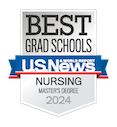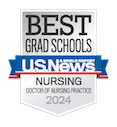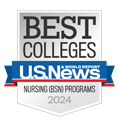U-M nursing, law collaboration aims to dispel myths about human trafficking
Most people have heard of human trafficking, but few can define it. Even experts in law enforcement and academia can have a hard time quantifying the problem.
The new Human Trafficking Collaborative website, developed by faculty at the University of Michigan School of Nursing and the U-M Law School, was created to dispel myths about human trafficking and to train health care providers to recognize and treat victims.

 Michelle Munro-Kramer, Ph.D., CNM, FNP-BC, the Suzanne Bellinger Feetham Professor of Nursing at the School of Nursing, and Bridgette Carr, an associate dean and director of the Human Trafficking Clinic at the Law School, developed the project for those who would like to learn more about human trafficking. This forced or compelled service takes two primary forms: labor trafficking and sex trafficking.
Michelle Munro-Kramer, Ph.D., CNM, FNP-BC, the Suzanne Bellinger Feetham Professor of Nursing at the School of Nursing, and Bridgette Carr, an associate dean and director of the Human Trafficking Clinic at the Law School, developed the project for those who would like to learn more about human trafficking. This forced or compelled service takes two primary forms: labor trafficking and sex trafficking.
In addition to the website, which launched this month, there is a continuing education module that meets state of Michigan training requirements for health care providers and videos documenting survivor and provider experiences.
he module is intended to help health care professionals identify and respond to survivors of human trafficking using a preplanned, comprehensive approach, so professionals know exactly what to do before a victim walks through the door, Munro-Kramer said.
There are also resources, such as sample screening policies and response procedures, that could be used at a health system level. Website content was informed by a statewide survey of federally qualified health centers, health departments and hospitals statewide.





